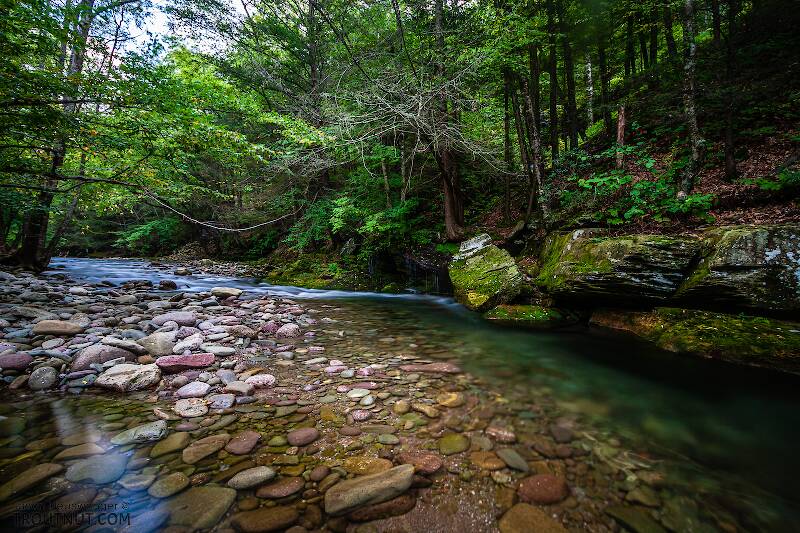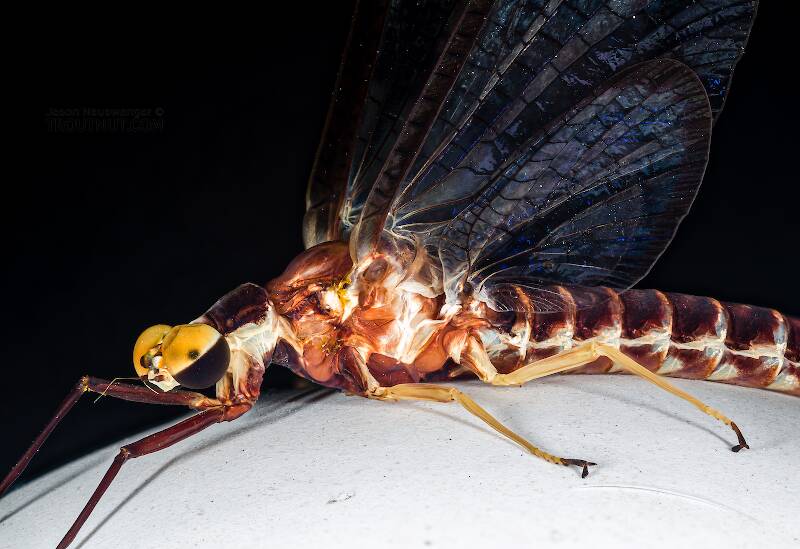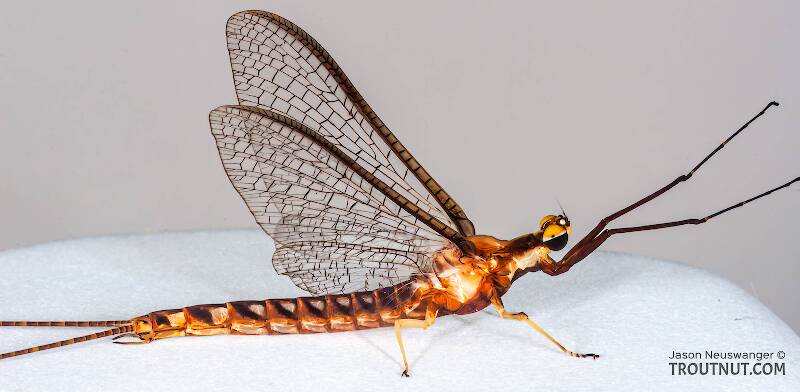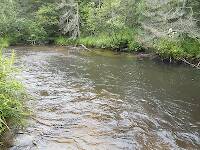
Salmonflies
Pteronarcys californica
The giant Salmonflies of the Western mountains are legendary for their proclivity to elicit consistent dry-fly action and ferocious strikes.
Featured on the forum

Nymphs of this species were fairly common in late-winter kick net samples from the upper Yakima River. Although I could not find a key to species of Zapada nymphs, a revision of the Nemouridae family by Baumann (1975) includes the following helpful sentence: "2 cervical gills on each side of midline, 1 arising inside and 1 outside of lateral cervical sclerites, usually single and elongate, sometimes constricted but with 3 or 4 branches arising beyond gill base in Zapada cinctipes." This specimen clearly has the branches and is within the range of that species.

Troutnut is a project started in 2003 by salmonid ecologist Jason "Troutnut" Neuswanger to help anglers and
fly tyers unabashedly embrace the entomological side of the sport. Learn more about Troutnut or
support the project for an enhanced experience here.
This topic is about the Mayfly Species Hexagenia limbata
It starts like a rise of small trout. There are dimples on the surface--fingerling trout eating midges, perhaps. But these are no fish. The water breaks and out pop the yellow sails of a giant Hexagenia dun. Then another. And another. A vortex appears in a flash below the mayfly and it vanishes with a slurp so loud it echoes off the distant bank. A square tail like a shark fin breaks the surface behind the swirl as a brown trout twice the size of your net retreats back to his deeper lair. The Hex hatch is on.This Midwestern legend plays out every year on calm, dark, humid nights in early July. Anglers who only fly fish once a year drive hundreds of miles to play their part in the drama, while the mayflies themselves make the television news by showing up on doppler radar or calling snowplows out of dormancy to remove layers of Hexagenia (or "Hex") duns from the bridges. In the cold trout rivers of Wisconsin and Michigan, huge nocturnal brown trout whose usual menu consists of smaller brown trout become, for a week or so, prime dry fly quarry.
According to the literature, these are the second largest mayflies in the United States, behind the related Litobrancha recurvata flies. However, there are reports of limbata exceeding 40mm in some locales, which would make them the largest.
Example specimens
NEMatt on May 23, 2014May 23rd, 2014, 3:30 pm EDT
Hi,
New to the site - love it. I was wondering if there was a suggested range of water temperature at which the Hex likes to hatch.
Thanks
Matt
New to the site - love it. I was wondering if there was a suggested range of water temperature at which the Hex likes to hatch.
Thanks
Matt
Entoman on May 23, 2014May 23rd, 2014, 8:45 pm EDT
Welcome to the forum, Matt.
At one time, it was thought in angling circles that hatches of fly would occur when water temps hit a certain mark. It turns out to be a bit more complicated then that. Besides differences in watersheds and regions, it also turns out that water temps in the aggregate have more to do with larval growth/maturity and hatch cycles. I've observed the big yellow mays hatching from spring fed rivers in early June with water temps in the low 50's and hatching in lakes a month later with water temps in the high 60's.
At one time, it was thought in angling circles that hatches of fly would occur when water temps hit a certain mark. It turns out to be a bit more complicated then that. Besides differences in watersheds and regions, it also turns out that water temps in the aggregate have more to do with larval growth/maturity and hatch cycles. I've observed the big yellow mays hatching from spring fed rivers in early June with water temps in the low 50's and hatching in lakes a month later with water temps in the high 60's.
"It's not that I find fishing so important, it's just that I find all other endeavors of Man equally unimportant... And not nearly as much fun!" Robert Traver, Anatomy of a Fisherman
TNEAL on May 24, 2014May 24th, 2014, 3:48 am EDT
Three years ago I had hexes emerging around June 20 at three PM with air and water both at 55...
NEMatt on May 25, 2014May 25th, 2014, 2:39 am EDT
thanks for the comments guys.
Bombillo
Posts: 2
Posts: 2
Bombillo on Jul 5, 2016July 5th, 2016, 10:50 am EDT
I have been contemplating this question for years. It definitely has something to do with the time of year and water temperatures. When our lakes hit about 65 degrees and it is around May 20th, every year, look out! Drought year and hot, it is earlier, wet and cold a little later. A correlation for sure.
Quick Reply
Related Discussions
Topic
Replies
Last Reply
1
May 23, 2014
by Entoman
by Entoman






